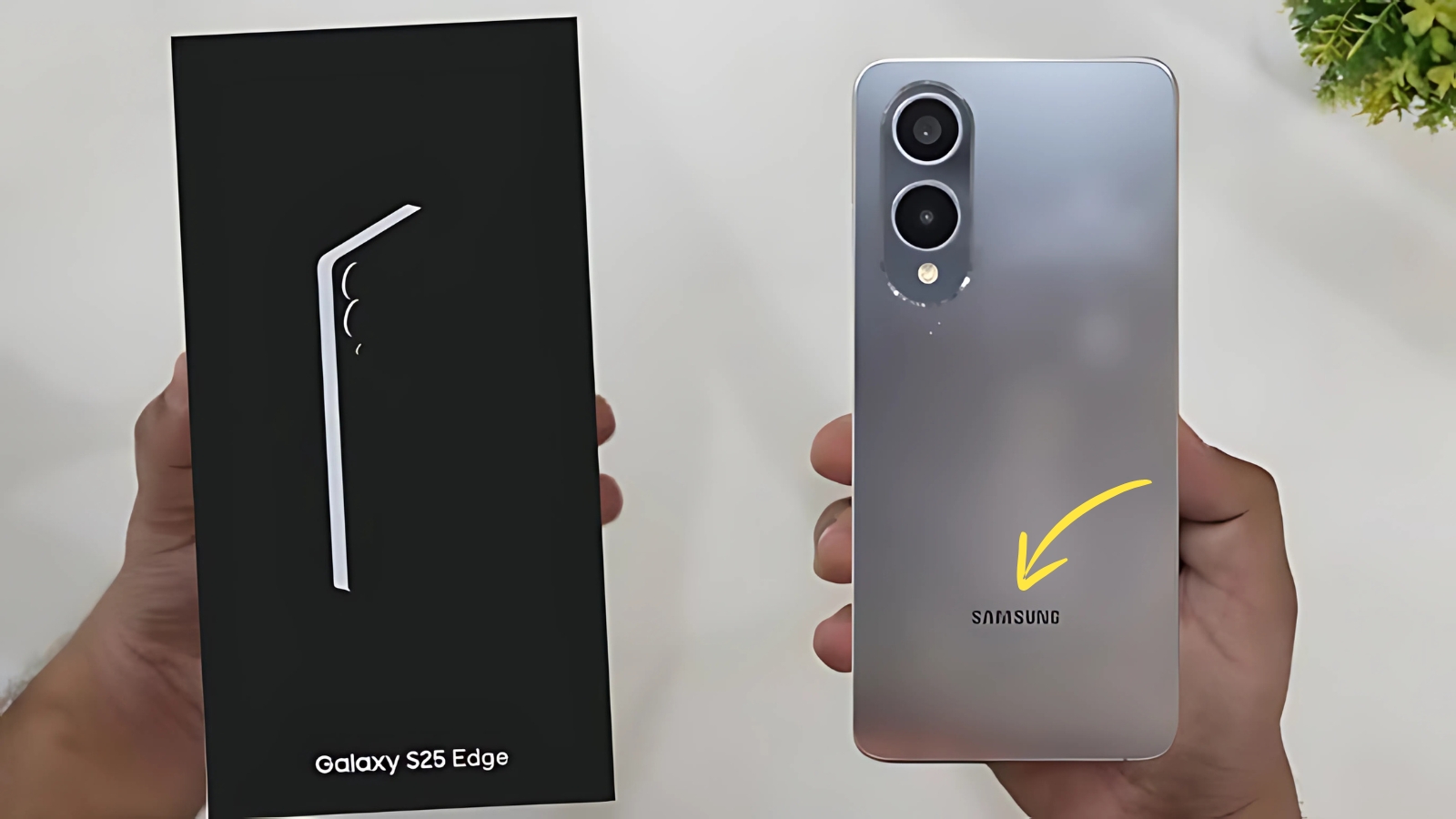Samsung Galaxy S25 Edge : The smartphone industry stands at a fascinating crossroads where innovation meets nostalgia. Samsung’s Galaxy S25 Edge has officially launched the ultra-thin revolution of 2025, but this engineering marvel represents just the opening act in what promises to be the most intriguing flagship battle in years. With Apple’s iPhone 17 Air lurking on the horizon, consumers find themselves witnessing the rebirth of a design philosophy that seemed buried alongside the bendgate controversies of yesteryear.
The Thin Phone Renaissance Begins
Samsung’s decision to launch the S25 Edge in May provides the company with a crucial first-mover advantage in the ultra-thin segment. At 5.8mm thick and weighing just 163 grams, the device feels almost impossibly light – users consistently describe the sensation as holding a “plastic dummy phone” despite its premium titanium construction.
This psychological impact cannot be overstated. In an era where flagship smartphones have steadily grown thicker and heavier, the S25 Edge delivers a genuinely surprising tactile experience that photographs and specifications simply cannot convey. The device forces users to reconsider their assumptions about what a premium smartphone should feel like.
The timing of Samsung’s launch strategy appears calculated to establish market expectations before Apple’s traditional September iPhone release cycle. By giving consumers months to experience ultra-thin smartphone design through the S25 Edge, Samsung potentially shapes the conversation around what constitutes acceptable trade-offs in pursuit of portability.
This strategic positioning echoes historical smartphone launches where being first to market with a new form factor provided lasting advantages, even when competitors eventually delivered superior implementations.

Apple’s Counter-Attack Strategy Takes Shape
Industry analysts anticipate Apple’s iPhone 17 Air will measure approximately 5.5mm thick – a mere 0.3mm thinner than Samsung’s offering. While this difference seems negligible, it represents Apple’s classic approach of incremental but meaningful improvements over competitor products.
The iPhone 17 Air faces unique challenges that Samsung avoided. Reports suggest Apple’s device will feature only a single 48MP rear camera, compared to the S25 Edge’s dual-camera system with a flagship-grade 200MP primary sensor. This represents a significant functional compromise that could alienate photography-focused users.
Battery capacity presents another critical battleground. The S25 Edge’s 3,900mAh battery already struggles with all-day usage for many users, while rumors suggest the iPhone 17 Air may feature an even smaller 2,800-3,000mAh cell. Apple’s renowned power efficiency and the custom C1 modem could compensate, but the mathematical disadvantage seems substantial.
However, Apple’s approach may prove more sustainable long-term. By focusing on efficiency improvements rather than maximizing specifications within constrained space, the iPhone 17 Air could deliver superior real-world performance despite seemingly inferior hardware specifications.
Design Philosophy Differences Emerge
Samsung’s approach with the S25 Edge prioritizes maintaining flagship-level specifications within an ultra-thin chassis. The company retained the 200MP camera system from the S25 Ultra, implemented a full titanium frame, and maintained IP68 water resistance – essentially refusing to compromise on traditional premium smartphone features.
This philosophy reflects Samsung’s confidence in its engineering capabilities and manufacturing precision. The company demonstrates that ultra-thin construction doesn’t necessitate feature reduction if sufficient resources and expertise are applied to component miniaturization and thermal management.
Apple’s rumored approach suggests a different priority structure. Early reports indicate the iPhone 17 Air will emphasize design purity and user experience optimization over maximum feature retention. The single-camera system and potential aluminum construction represent conscious trade-offs favoring form factor over specification sheets.
These contrasting philosophies will create fascinating market dynamics. Samsung appeals to specification-conscious consumers who want maximum functionality in minimal space, while Apple targets users who prioritize design elegance and ecosystem integration over individual component capabilities.
New Hyundai Tucson – New model SUV launch for hi-fi features
Engineering Challenges Define Success Metrics
Both devices face identical fundamental challenges: heat dissipation, battery life, structural integrity, and component miniaturization. Success will be measured not by which phone achieves superior specifications, but by which company better manages these inherent trade-offs.
Thermal management becomes particularly critical in devices this thin. Traditional cooling solutions like vapor chambers must be completely reimagined for ultra-thin form factors. Samsung’s broader but thinner cooling approach provides early insights into viable solutions, while Apple’s efficiency-focused processor design represents an alternative thermal management strategy.
Battery technology limitations affect both manufacturers equally. Neither company has access to revolutionary battery chemistry that could eliminate capacity constraints in ultra-thin devices. Success depends on optimizing existing lithium-ion technology and implementing aggressive power management through software and hardware efficiency improvements.
The structural integrity challenges faced by ultra-thin smartphones require entirely different engineering approaches than traditional flagship construction. Both Samsung’s titanium framework and Apple’s rumored aluminum design must prove they can withstand daily use without the “bendgate” issues that plagued earlier thin smartphones.
Samsung Galaxy S25 Edge Consumer Behavior Patterns Will Determine Winners
The ultimate success of both devices depends on consumer willingness to accept trade-offs for improved portability. Early S25 Edge reviews consistently highlight the remarkable in-hand experience while acknowledging functional limitations, particularly regarding battery life and thermal performance.
User adaptation patterns become crucial factors. If consumers modify usage behaviors to accommodate ultra-thin phone limitations – carrying portable chargers, avoiding intensive gaming, managing thermal loads – then both devices could find sustainable market niches.
However, if consumers expect ultra-thin phones to match traditional flagship performance in all scenarios, neither the S25 Edge nor iPhone 17 Air may achieve lasting success. The market will essentially vote on whether portability improvements justify functional compromises.
The September iPhone 17 Air launch will provide definitive answers about consumer appetite for ultra-thin premium smartphones. Apple’s historically strong ecosystem integration and user loyalty could overcome specification limitations that might challenge other manufacturers, potentially validating the entire ultra-thin smartphone category for future development.
